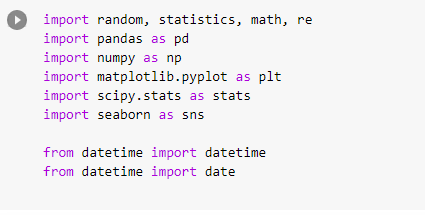1. Grow wealth, not social status
Being wealthy isn't about how much you spend.
It means owning assets that generate passive income.
Forget about "keeping up with the Joneses" if you want to become a millionaire.
2. Allocate income consistently
50/30/20 is the commonly recommended ratio for splitting your income:
▪ 50% - needs
▪ 30% - wants
▪ 20% - investments
To become a millionaire sooner, adjust the ratio: allocate more to “investments” and spend less on “wants.”
3. Avoid credit card debt (and other debt traps)
Interest charges and fees from buying on credit inflate costs, using up money you could invest instead.
If you use a credit card, keep a zero monthly balance.
4. Pay Yourself First
Sometimes we lose focus, overspend, and have nothing left for saving or investing.
“Pay yourself first” means deducting savings and investments from your income first, and only spending the remaining amount.
Discipline is crucial.
5. The Rule of Automation
Use technology to make personal finance habits “automatic.”
Apply it to as many tasks as you can. E.g., bill payments, savings, and investments.
Automation takes away the pressure to remember everything and gives you time to grow more income.
6. Prepare for worst-case scenarios
Give yourself a safety net in case something goes wrong.
Deposit 3-6 months of income into an interest-bearing savings account.
Keep the fund only for dire emergencies, and you'll take confidence knowing it's there.
7. Invest in yourself first
Increasing your financial IQ is how to beat the system.
Spend time and money learning about finance so you make sound investment decisions.
If you master simple finance principles, you’ll be ahead of most people around you.
8. Make compound interest work for you
Compound interest is where you earn “interest on interest,” as well as the principal you invested.
An investment with compounding interest grows exponentially.
The sooner you start, the bigger your returns will be.
9. The Rule of 70
Use the Rule of 70 formula to calculate how long it will take for your investment to double.
E.g., an investment with a 7% return each year will double in 10 years (70 / 7% = 10.3).
NB: Sometimes the same method is called the Rule of 72.
10. Invest in Businesses
“You must own equity - a piece of a business - to gain your financial freedom.” -
@naval Investing in companies generates income and long-term wealth.
Ways to do this:
▪ Work for shares
▪ Start your own business
▪ Buy shares in a company
@naval 11. Hold Forever
“Our favorite holding period is forever." - Warren Buffett.
Trading stocks takes specialist knowledge and it’s time-intensive.
Instead, adopt Buffett’s buy-and-hold strategy to invest in stocks/funds to get the biggest return for the least amount of effort.
@naval 12. The 4% Rule
This is the maximum amount you should withdraw from your retirement capital each year.
If you retire with $1 million and draw down 4%, your income will be $40,000 per year.
It's essential to become a millionaire to enjoy life after retirement.
@naval People believe a “millionaire lifestyle" means luxury and high spending, which makes it seem out of reach.
But most millionaires are self-made and learn habits and skills to grow wealth.
Follow these rules in your 20s, and you will be a millionaire in your 30s.
@naval TL; DR
1. Grow wealth, not social status
2. Invest early
3. Avoid credit card debt
4. Pay Yourself First
5. Automate
6. Have an emergency fund
7. Invest in yourself
8. Earn compound interest
9. The Rule of 70
10. Invest in Businesses
11. Hold Forever
12. The 4% Rule
